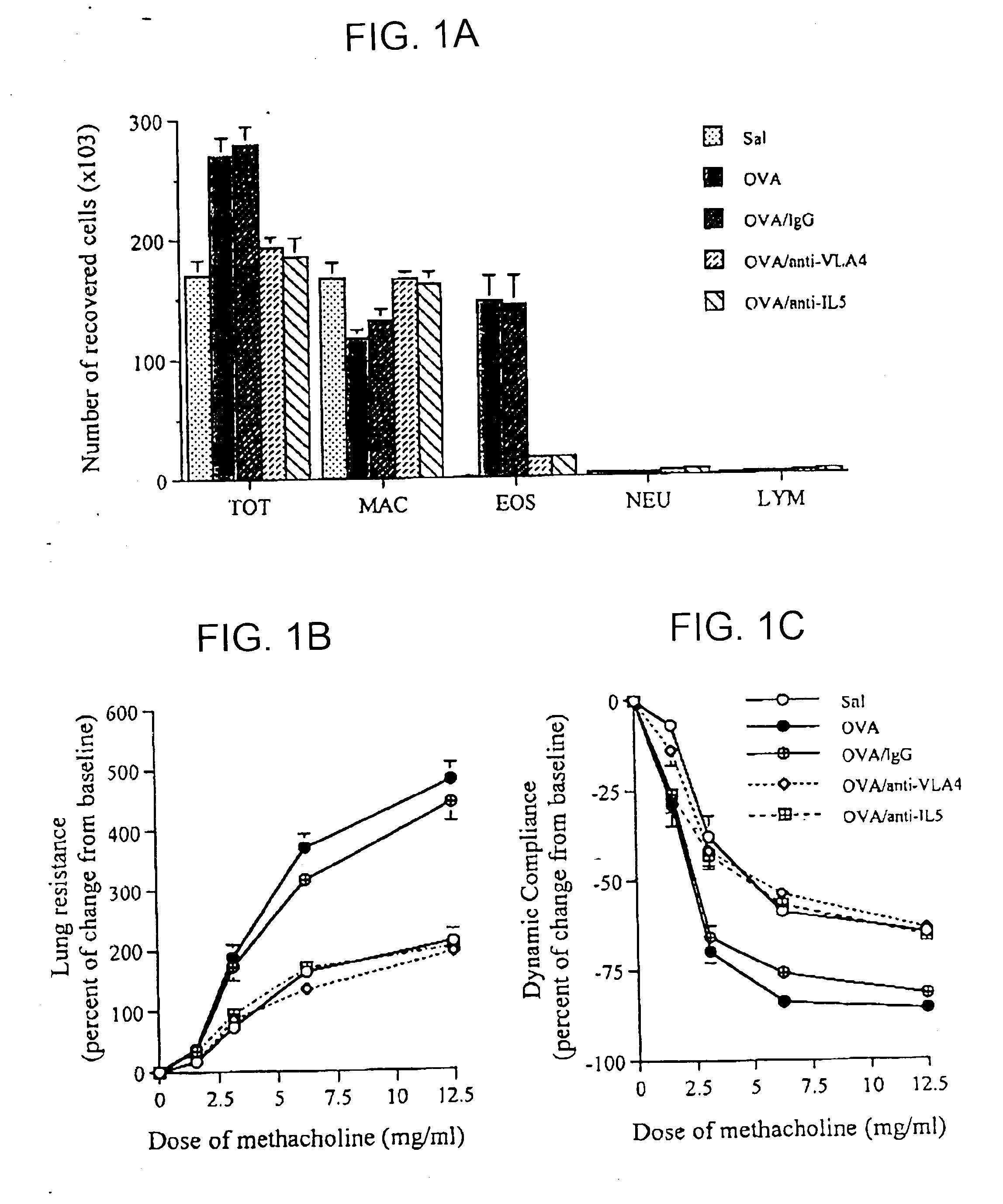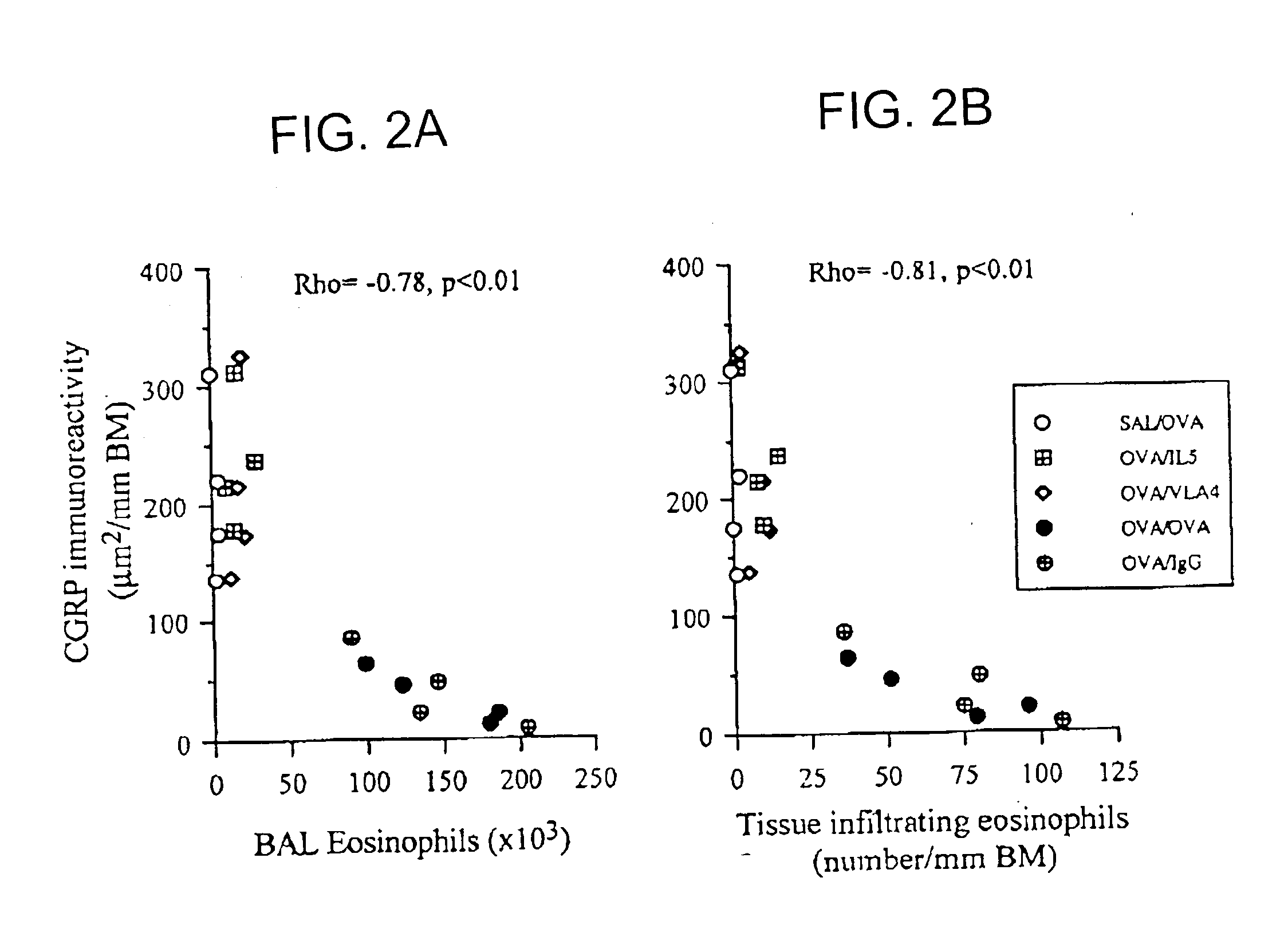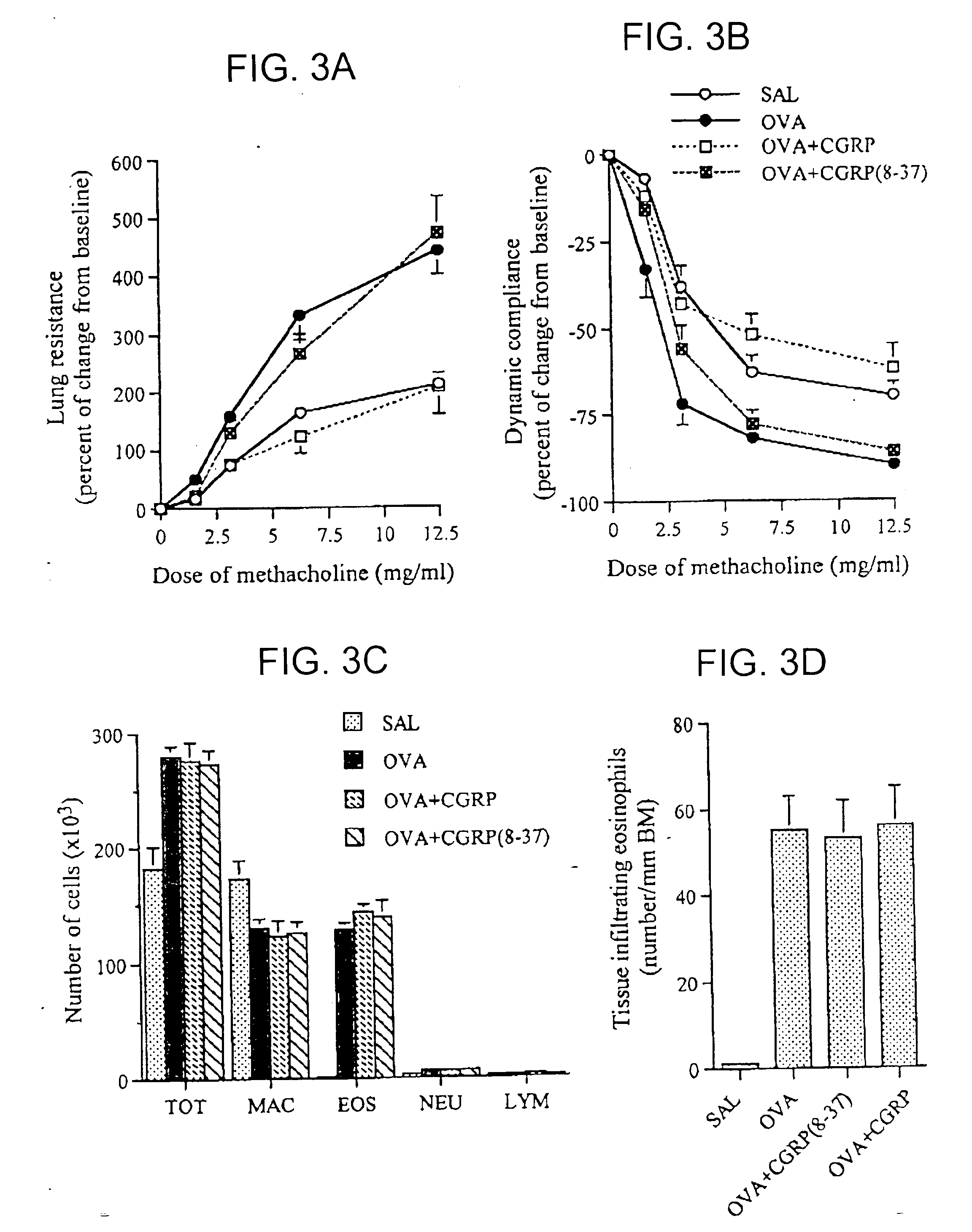Method for reducing allergen-induced airway hyperresponsiveness
- Summary
- Abstract
- Description
- Claims
- Application Information
AI Technical Summary
Benefits of technology
Problems solved by technology
Method used
Image
Examples
example 1
[0135]This example demonstrates that allergen challenge depletes CGRP in the airways of sensitized mice.
[0136]In this experiment and all following experiments described herein, pathogen-free female BALB / c mice were obtained from Jackson Laboratories (Bar Harbor, Me.) at 8 wk of age and were maintained on ovalbumin-free diet.
[0137]Mice (8 / group / experiment) were sensitized by intraperitoneal injection of 20 μg of ovalbumin (Grade V, Sigma) emulsified in 2.25 mg alum (Alum® Inject; Pierce, Rockford, Ill.) in a total volume of 100 μl on days 0 and 14. On days 28, 29 and 30, mice were challenged via the airways by a 20-minute inhalation exposure to aerosols of ovalbumin (1% in saline) obtained from a DeVilbiss ultrasonic nebulizer (particle size 1-5 μm). Age-matched, control animal groups (8 / group / experiment) consisted of mice injected with alum alone (non-sensitized) and exposed either to aerosols of saline or to aerosolized ovalbumin, and mice sensitized to ovalbumin but subsequently e...
example 2
[0146]This example demonstrates that allergen-mediated CGRP depletion is dependent on the development of eosinophilic airway inflammation in sensitized mice.
[0147]To determine if the depletion of CGRP that occurs following sensitization and allergen exposure is dependent on the development of eosinophilic airway inflammation, the effects of treatments with anti-VLA4 and anti-IL5 antibodies on the expression of this neuropeptide were examined in ovalbumin-sensitized and challenged mice. For this experiment, the rat anti-mouse Very Late Antigen (VLA)-4 and anti-mouse IL-5 monoclonal antibodies were purified, respectively, from cultures of the hybridoma cell lines PS / 2 and TRFK-5 under endotoxin-free conditions using a protein G-sepharose gel affinity column (Pharmacia, Uppsala, Sweden). The hybridoma cell lines were obtained from American Type Culture Collection (Manassas, Va.). Non-immune rat IgG (Sigma) was used as control antibody. Mice were treated by a single intravenous injectio...
example 3
[0151]This example demonstrates that allergen-induced airway hyperresponsiveness is abolished by CGRP in sensitized mice.
[0152]To determine the role of CGRP in allergen-induced AHR, the effects of two pharmacological approaches were examined: (1)—administration of CGRP(8-37) to antagonize the effect of endogenous CGRP, and (2)—administration of exogenous CGRP to compensate for the in vivo depletion. The human synthetic calcitonin gene-related peptide (α-CGRP) and the highly selective CGRP receptor antagonist, human synthetic CGRP (fragment 8-37), were obtained from Sigma Chemical Co. (St. Louis, Mo.) and were dissolved in endotoxin-free, non-pyrogenic saline. In this experiment, mice were treated by intraperitoneal injection of CGRP (20 μg / kg) or CGRP fragment 8-37 (100 μg / kg). Sensitization, challenge, and evaluation of BAL and AHR in the mice were performed as described in Examples 1 and 2.
[0153]The results showed that treatment of mice with CGRP(8-37), at 2 h prior to each allerg...
PUM
| Property | Measurement | Unit |
|---|---|---|
| Fraction | aaaaa | aaaaa |
| Time | aaaaa | aaaaa |
| Time | aaaaa | aaaaa |
Abstract
Description
Claims
Application Information
 Login to View More
Login to View More - R&D
- Intellectual Property
- Life Sciences
- Materials
- Tech Scout
- Unparalleled Data Quality
- Higher Quality Content
- 60% Fewer Hallucinations
Browse by: Latest US Patents, China's latest patents, Technical Efficacy Thesaurus, Application Domain, Technology Topic, Popular Technical Reports.
© 2025 PatSnap. All rights reserved.Legal|Privacy policy|Modern Slavery Act Transparency Statement|Sitemap|About US| Contact US: help@patsnap.com



